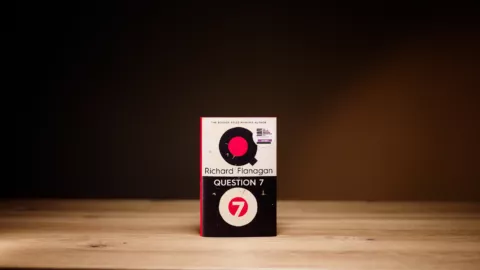
Jonathan Blitzer Longlist Interview
9 October 2024
How does it feel to be longlisted?
Quite surprising and affirming!
How did you conduct your research?
All That She Carried is the first book on Ashley’s Sack, a unique artifact of the African American experience that illuminates key themes in this history, such as enslavement, loss, family, motherhood, love, perseverance, artistry, and migration. While other scholars have conducted research on the sack or used it as an illustration of Black family separation or of radical visual self-representations, no one had before produced a full-length study of the artifact or its keepers. Researching the sack presented me with numerous and at times seemingly insurmountable challenges because the embroidered sack is the only known record of Rose and Ashley’s story. However, this documentary deficit proved to be an unexpected benefit because it necessitated the construction of a different kind of history, which I have come to think of as history in a poetic mode. This mode does not reject scholarly methods of historical investigation. Rather, it enlarges them by looking for a range of atypical sources and by offering interpretations that reach for deeper understandings of the experiential and emotional facets of historical life. The lack of traditional sources pushed me to think creatively about the relationship of early Black history to the archives, innovative archival practices, and experimental ways of narrating histories of Black women and other marginalized groups. Because the documentary record for this family is scanty prior to 1900, genealogical and biographical links in the book are speculative. In the book, I expose the inability to recover full and precise information about this family and many families that suffered enslavement, and I dwell on this difficulty as a meaningful part of the story.
How does the motif of the cloth sack convey the experiences of slavery in your work?
Closely considering the sack opened the way for me to tell a broad story of American slavery, Black love, familial resilience, and women’s craft through the intimate lens of one object passed down through a single line of kin. An interdisciplinary history of African American survival, the book illuminates maternal-child bonds and embroidered as well as embodied memories that withstood the terrors and techniques of enslavement and forced separation.
How is the theme of memory illuminated in the book?
In the book, I consider how objects – especially objects explicitly linked to stories -- have a special capacity to contain and revive memory in human experience. The delicate embroidery on the sack represents a family memory of sorrow and resilience that might have been lost if not for the carrying capacity of that bag. While doing this work, I was conscious of how my book about the sack is itself an object that helps to preserve public memory about a collective past. I was taken by this sense of doubling, or echoing, in the project.
What are you working on next?
I am at work on a cultural history and dual biography of two influential American abolitionist women, Harriet Jacobs (who was black and formerly enslaved) and Harriet Beecher Stowe (who was white and always free). The trajectories of these women’s personal and political lives across most of the 19th century are strikingly different, and yet their ideas and paths crossed in ways that reveal the motivations and challenges of female activists in the abolitionist era. Since both women travelled to England to promote their major works, Incidents in the Life of a Slave Girl (Jacobs) and Uncle Tom’s Cabin (Stowe), I look forward to visiting the UK to conduct research.


10 April 2025

17 December 2024

19 November 2024